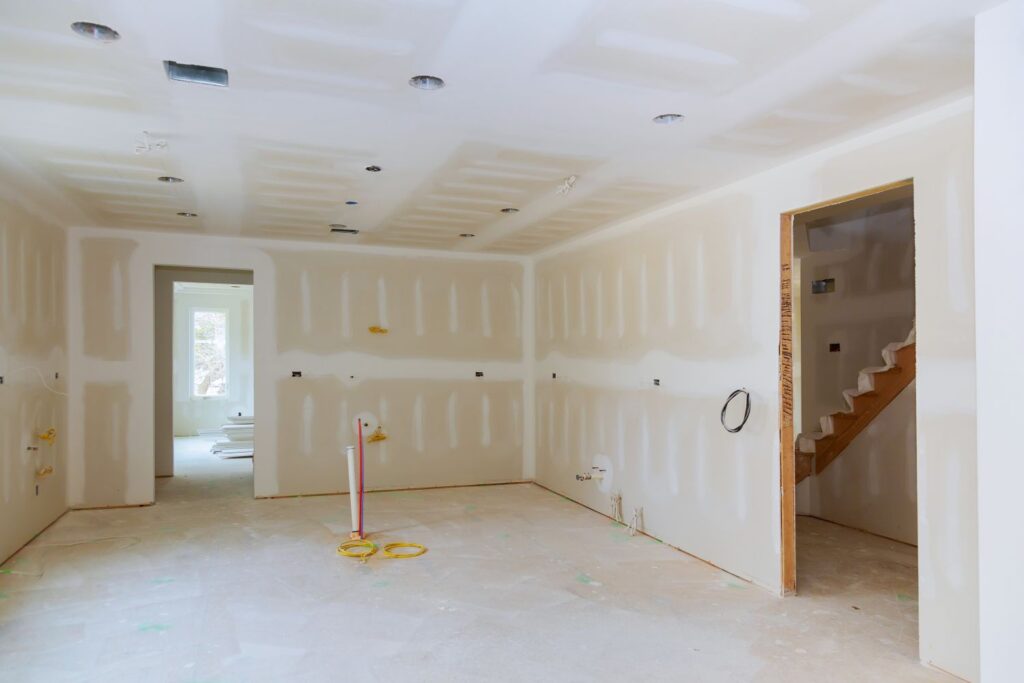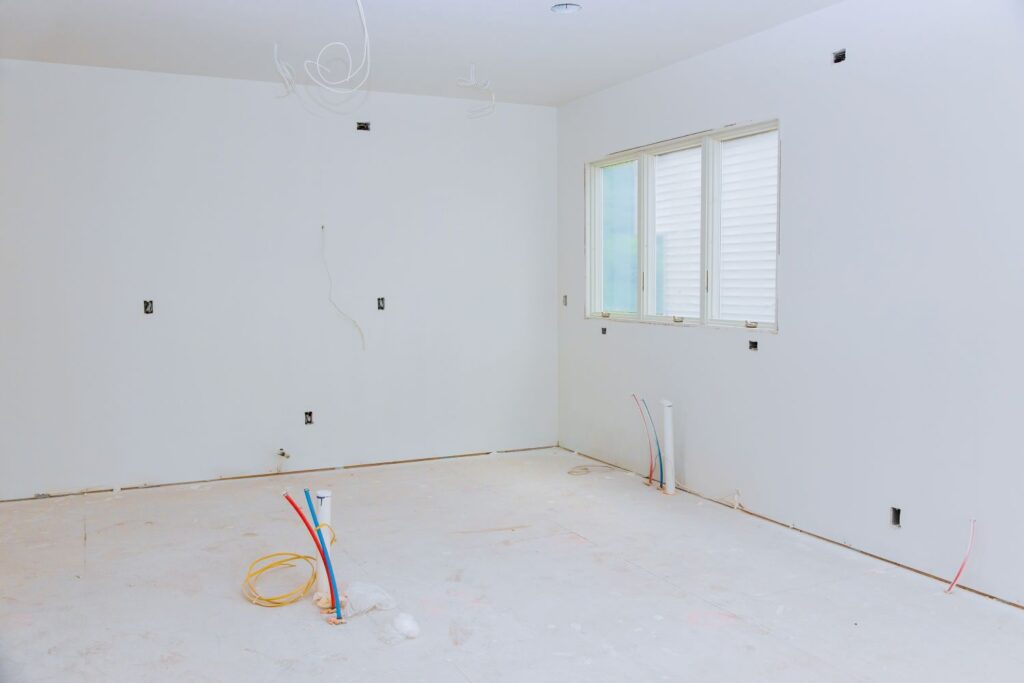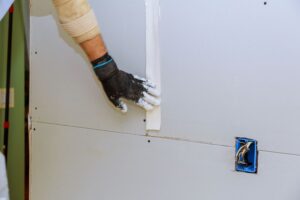Walk into any older Escondido home, and you might notice something a little… denser. Maybe it’s the way sound doesn’t echo through the hallways. Or how the walls feel just a bit more solid when you knock on them. That, my friend, is the magic of traditional plaster walls—and it’s wildly different from modern drywall setups.
But which one is better? That’s the question every homeowner eventually runs into: drywall vs plaster—which wall material should you choose?
Whether you’re planning a remodel, buying a fixer-upper, or just trying to figure out what your current walls are made of, we’ve got you covered. Today, we’re breaking it down with facts, comparisons, and real-world tips from the team at SGP Drywall, your go-to crew for everything wall-related in Escondido.
Let’s get to the heart of the wall debate!
A Quick Look Back: The History of Plaster and Drywall
Before we dive into the pros and cons, let’s hit rewind.
Plaster: The Old-School Classic
For centuries, plaster was the standard wall material. Applied in layers over wooden slats (called lath), it dried hard and durable. From colonial homes to early 20th-century buildings, lath and plaster walls ruled the roost.
Drywall: The Time-Saving Revolution
Fast forward to the post-WWII era, and along came drywall—a faster, cleaner, and cheaper option. Also called gypsum board, it’s now the modern standard for everything from condos to custom homes. Its popularity skyrocketed thanks to its ease of installation and repair.
So now the question becomes…
Drywall vs Plaster: What’s the Actual Difference?
Here’s where we get to the good stuff—the true differences between drywall and plaster. Spoiler: it’s more than just how the walls feel when you tap on them.
| Feature | Drywall | Plaster |
|---|---|---|
| Installation Time | Fast and efficient | Labor-intensive and slow |
| Cost | Lower upfront | Higher due to materials and labor |
| Durability | Good, but dents easily | Extremely strong and durable |
| Soundproofing | Decent | Excellent due to density |
| Insulation | Standard | Better thermal mass |
| Finish | Smooth or textured | Ultra-smooth, artisan look |
| Repair | Quick patching possible | Tricky, requires skill |
So which wall material wins? That depends on what you value most.
The Pros and Cons of Plaster Walls
Let’s take a closer look at the plaster wall pros and cons—because, yes, there’s a reason older homes still stand firm with plaster in place.
Pros:
- Durability: It’s incredibly resistant to dings, bumps, and scuffs.
- Soundproofing: Thanks to its density, plaster is naturally sound-dampening.
- Timeless Aesthetic: Plaster creates elegant, smooth wall finishes that are tough to replicate.
- Fire Resistance: Plaster holds up well under heat.
Cons:
- Installation Hassle: It takes more time, tools, and skill to apply.
- Higher Cost: Between labor and materials, the cost of plaster vs drywall can be significantly more.
- Difficult to Repair: Cracks and damage often require professional attention.
Still, if you’re restoring a historic property or aiming for a luxe finish, plaster might be worth the investment.
The Pros and Cons of Drywall

Ah, drywall—it may not sound exciting, but it changed the construction world for a good reason.
Pros:
- Affordable: The materials are cost-effective and widely available.
- Fast Installation: Projects that might take weeks with plaster can be done in days.
- Easy to Repair: Whether it’s a dent or a full panel, drywall installation benefits include the ability to patch things up fast.
- Versatile: Works well with textures, paint, and modern wall system designs.
Cons:
- Less Durable: More prone to holes and dents than plaster.
- Moisture Sensitivity: Drywall doesn’t love high humidity or leaks—unless you use moisture-resistant drywall.
- Sound Transmission: Standard drywall doesn’t block sound, as well as plaster.
That said, drywall remains the go-to choice for new builds, remodels, and cost-conscious upgrades.
Wall Finishing and Customization Options
You’ve chosen your material. Now what?
Whether you’re using plaster vs gypsum board, your finish makes a significant difference in style and longevity.
Drywall Finish Options
- Orange peel, knockdown, and skip trowel textures
- Full-smooth finish (if you love a clean, modern look)
- Painted or wallpaper-ready
Plaster Finish Options
- Venetian plaster or limewash finishes
- Subtle sheen or matte surfaces
- Intricate patterns and curves
Drywall is great for quick, uniform looks. Plaster? That’s your go-to if you want something custom and artisan.
Which One’s Right for Your Escondido Home?
This is where the real decision-making starts.
Go with Plaster If:
- You’re restoring a historic Escondido home
- You want ultra-smooth, high-end finishes
- Soundproofing and thermal mass are priorities
- You’re okay with longer timelines and higher costs
Choose Drywall If:
- You need quick results and modern convenience
- You’re on a budget but still want versatility
- You’re updating a standard home or investment property
- You want to DIY some repairs down the road
Ready to Talk Walls? Let’s Do It Right

Still deciding between plaster vs drywall for your home? Whether you’re working on a whole-home renovation or a single-room refresh, the pros at SGP Drywall are ready to help you figure out what fits best.
We’ll talk through your goals, timeline, and budget to help you pick a wall system that works and wows. From modern wall finishes to vintage-style restorations, we’ve got the tools, the talent, and the local know-how to make it happen.
Contact SGP Drywall today—and let’s get your walls looking (and performing) their best.
FAQs: Drywall vs Plaster
Can you paint directly over plaster or drywall without priming?
Technically, yes—but you shouldn’t. Both plaster and drywall are porous and absorb paint unevenly. Without a good primer, you’ll get blotchy results and reduced paint longevity. For best results, always prime your walls—especially if they’ve been freshly installed or repaired.
Are there environmental benefits to choosing drywall over plaster?
Drywall is generally more eco-friendly to produce and transport due to its lightweight nature and widespread manufacturing. Some types also use recycled materials. However, lime-based plasters can be more sustainable long-term because of their natural composition. It’s all about weighing the full lifecycle of the materials.
Does plaster or drywall work better with insulation systems?
Both work well, but drywall is often easier to pair with modern insulation like fiberglass or foam panels. Plaster walls typically rely on the original framing and may need retrofitting to accommodate today’s insulation standards—especially in older homes where space behind the walls is limited.
Still Thinking About That Wall Finish? Let’s Clear Up the Myths.
If you enjoyed learning the ins and outs of wall systems, don’t miss our next post: Plastering Over Drywall: Common Myths and Facts Explained. It’s the guide you need if you’re thinking about mixing old-world charm with modern materials.
Let’s keep building better walls—together!




